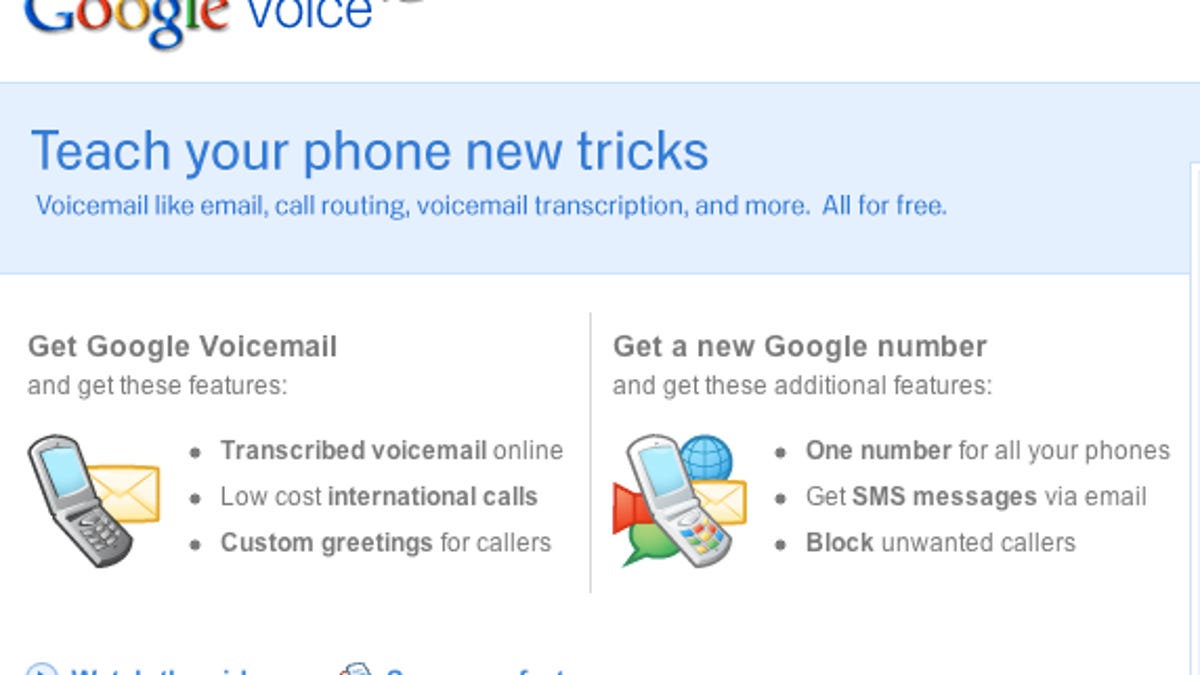Four major holes in Google Voice
Google has made its free voice service open to anyone in the U.S., but there are some major holes in the less-than-perfect product that Google can, should, and probably will (eventually) fix.
I like Google Voice, I really do. But now that the search giant has thrown open the gates to make Google Voice free for anyone in the U.S., many more people will get the opportunity to pick and praise.
After all, it was Google's multipronged voice service for forwarding phone numbers, sending free text messages, transcribing voice mail, and making voice messages accessible online that recently got me out of a bind with a broken phone.
Still, there are persistent foibles in the less-than-perfect service that Google bought a scant three years ago when it was still called GrandCentral. The call-block, listening-in, and call-forwarding features are great, and visual voice mail is and has been a plus. But inconsistencies, especially with the computer-aided transcription of voice mail messages and with phone number mess-ups in the Google Voice mobile apps, have continuously disappointed.
We overlooked some drawbacks in the name of a free service that has essentially been in closed beta since 2007, and therefore subject to a little leeway, but all that is about to change now that it's open season. Google Voice already had more than a million subscribers while it was still in invite-only private mode, and I suspect millions more callers will be less forgiving once the thrill of accessing another hot Google service wears off.
Consumer pressure will surely cause Google to throw more resources at the system's holes, and also give it an opportunity to monetize by adding more targeted advertising, planning waves of premium features for consumers, and selling corporate plans to companies managing a mobile workforce. I welcome the compliments and critiques that will hopefully lead to the changes, and Google should too.
So if you're listening, Google, here's my list of the top four features missing in today's Google Voice.
Porting: You can
If you want to people to reach you exclusively on a Google Voice-issued number, you need to abandon your number and get a new one. Since other, smaller services, like
Accurate transcription: Most accurate voice-to-text services come with a cost, especially if a human gets involved in quality control. We've poked fun at Google's sometimes comically incorrect results. Competitors like YouMail offer premium visual voice mail transcriptions in addition to freebies much like Google Voice's service. Google should take YouMail's cue and keep the basic digital transcriptions free while ramping up its service with tiered pricing options for those who seek absolute accuracy.
Uniform mobile apps: Thanks to its hearty integration into the Android operating system, Google Voice for Android is by far the best Google Voice experience for mobile phones. You don't have to have a smartphone to benefit--the service can text you transcriptions if you've got a more basic cell--but it helps. Now that Google Voice is sure to go mainstream, developers should make a concerted effort to standardize the app for the major mobile platforms.
International support: Google Voice is currently U.S.-only. As the service scales, it should also expand across the globe. Google will never truly achieve world domination otherwise.
Related-story redux:
Your best 'worst' Google Voice transcription errors
What's your funniest Google Voice transcription flub?
Article updated at 8:32PM PT with more details on conditional call forwarding.


